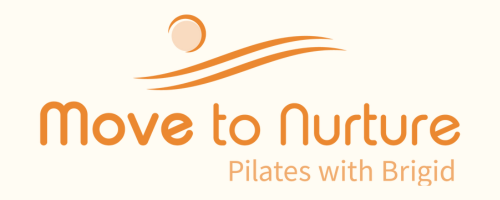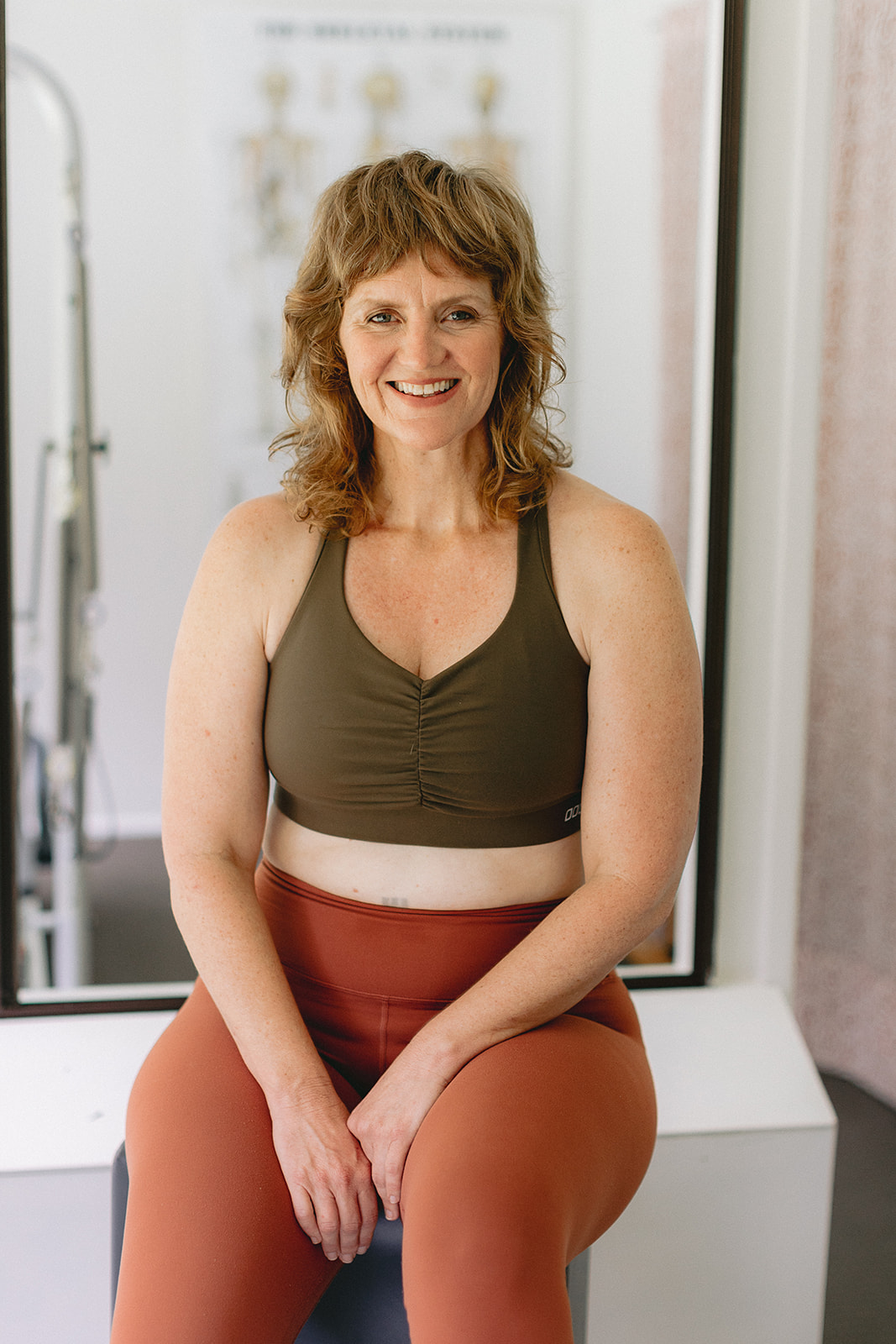How to Care for Your Pelvic Floor
At Move to Nurture Pilates, I work with women navigating the journey through motherhood, menopause and beyond—and one area that often gets overlooked, until it becomes an issue, is the pelvic floor. Whether you’re experiencing leaks when you sneeze, a dragging sensation in your lower body, or recurring back pain, these are all signs your pelvic floor is calling out for attention. The good news is, with gentle, targeted movement, you can learn how to support and strengthen this vital area of your body.
Shoudn’t I already know this?
The truth is, no one was taught how to care for their pelvic floor. Not at school, not at the postnatal 6 week check up and not from your GP. In the last 30 years more female physiotherapists have advanced the research into pelvic health and their findings underpin this blog, so keep reading!
Understanding Your Pelvic Floor (and Why It’s Not Really a “Floor”)
The pelvic floor is a group of muscles and connective tissue that span the bottom of your pelvis, stretching like a hammock or a supportive sling. These muscles support your bladder, bowel, and uterus, and play a key role in continence, sexual function, core stability, and even your posture and breathing.
Despite its name, the pelvic floor isn’t a rigid surface. It’s more accurate to think of it as a diaphragm—an adaptable, responsive structure. In fact, your pelvic diaphragm works in coordination with your thoracic diaphragm (the muscle under your ribcage that drives your breath). When you breathe in, your thoracic diaphragm contracts and descends, and ideally, your pelvic diaphragm mirrors this movement—relaxing slightly downward to accommodate the internal pressure. When you exhale, both diaphragms rise. This coordinated movement is central to healthy pelvic floor function.
But through life’s changes—pregnancy, birth, hormone shifts during perimenopause and menopause, surgery, injury, or long-term stress—this synchrony can be disrupted. That’s where targeted movement like Pilates can make a profound difference.
The Role of Pilates in Pelvic Health
Pilates is particularly well-suited for pelvic health because it focuses on alignment, breath, core control, and mindful movement—all of which help re-establish the connection between your pelvis, spine, breath, and overall stability.
Research supports this too. A 2018 systematic review published in the Journal of Bodywork and Movement Therapies found that pelvic floor muscle training, including Pilates-based methods, was effective in reducing urinary incontinence and improving quality of life in women. Another 2019 study in Neurourology and Urodynamics showed that breathing exercises combined with pelvic floor muscle training enhanced pelvic floor strength and endurance significantly more than strength work alone.
In other words, integrating your breath and movement—as we do in Pilates—helps you train your pelvic floor intelligently, not just forcefully.
Pelvic Health Do’s and Don’ts
So how can you take better care of your pelvic floor? Start here with our guide of practical do’s and don’ts to help you feel more supported, aligned, and in tune with your body.
✅ Pelvic Health Do’s
1. Do enjoy walking
Walking is one of the most pelvic-floor-friendly activities. It supports circulation, encourages natural pelvic motion, and builds whole-body strength and responsiveness. Aim for regular, comfortable walks with a relaxed gait and natural arm swing.
2. Do mobilise your rib cage
Stiffness in your upper body can limit your breathing and disconnect your thoracic and pelvic diaphragms. Try gentle ribcage twists or side bends in your Pilates practice. Mobilising your ribs helps align them with your pelvis and encourages deeper, more coordinated breathing.
3. Do practice deep breathing
Think of your breath reaching all the way down to your sit bones. Visualise your inhale expanding 360 degrees into your rib cage and down into your pelvis. This diaphragmatic breathing nourishes your pelvic floor, gently stretches and strengthens it, and helps reduce overactive muscle tone.
4. Do release tension from your pelvic floor
Just like any other muscle, your pelvic floor can become too tight, especially in response to stress or misalignment. Using a firm rubber ball to release tension around your sit bones and tailbone can make a big difference. Try this seated or lying on your back, placing the ball gently under one side and breathing deeply as the tissues release.
5. Do stretch your glutes
Tight glutes (your bum muscles) can tug on your pelvic floor and throw off your alignment. Incorporate glute stretches like pigeon pose or a seated figure-four stretch into your daily routine to help your pelvis sit more neutrally and ease excess tension in the pelvic floor.
❌ Pelvic Health Don’ts
1. Don’t pretend your pelvic floor will improve by itself
Pelvic floor issues aren’t just something to ‘wait out.’ They respond well to gentle, purposeful movement—but not to being ignored. The earlier you take action, the easier it is to improve symptoms.
2. Don’t think it’s too late to get improvement
We hear this all the time: “I wish I’d known this years ago.” But even if you’ve had symptoms for decades, it’s not too late. The body is adaptable. With the right guidance, change is possible at any age.
3. Don’t spend too long sitting without awareness
Slouching or tucking your pelvis while sitting increases downward pressure and restricts pelvic floor movement. If you spend a lot of time seated, check in with your alignment: are your sit bones grounded evenly? Are your ribs stacked above your pelvis? Small changes make a big difference.
4. Avoid shallow or belly breathing
Lifting your shoulders or chest to breathe—or forcing your belly out on the inhale—creates tension patterns that bypass your diaphragm and pelvic floor. Aim for wide, low rib breathing with each inhale, and allow a natural exhale. It might take practice, but the results are worth it.
5. Don’t despair
Pelvic floor symptoms can feel lonely, embarrassing, or even hopeless—but you’re not alone, and you don’t have to suffer in silence. Many women find real, lasting improvement through education and movement. With consistency and support, things can get better.

Where to Start
If you’re new to pelvic floor work, start gently. At Move to Nurture Pilates, I teach pelvic awareness gradually, helping you connect to your breath, release tension, and build strength without straining.
For many women, the key is coordination—not just strength. That’s why my approach focuses on the whole body, not just “squeezing” the pelvic floor. We work to realign your posture, mobilise your spine, reconnect you to your breath, and help your body remember how to support you from the inside out.
My 1:1 sessions and Pilates at Home membership are designed with mid-life women in mind. Whether you’re postnatal, post-menopause, or simply curious about reconnecting with your core, I will meet you where you are—and support you as you move forward.
Final Thoughts
Caring for your pelvic floor isn’t about straining, stiffness, or squeezing. It’s about curiosity, breath, alignment, and support. When we treat the pelvic floor as part of the whole body—and move with intelligence and compassion—we unlock natural function to support strength, ease, and confidence.
If you’d like to explore this further, come visit me at Move to Nurture Pilates. I believe every woman deserves to feel strong, supported, and connected to her body—at every stage of life.
To celebrate PROLAPSE AWARENESS MONTH I’m offering your first month of Pilates at Home for 50% off!
That’s $26 for your first month.
Simply enter the code PRO50OFF on the sign up page where it asks if you have a coupon code.
This offer is only available until June 30, and you can cancel anytime, you will get full access to the membership library until the next monthly payment date.





0 Comments